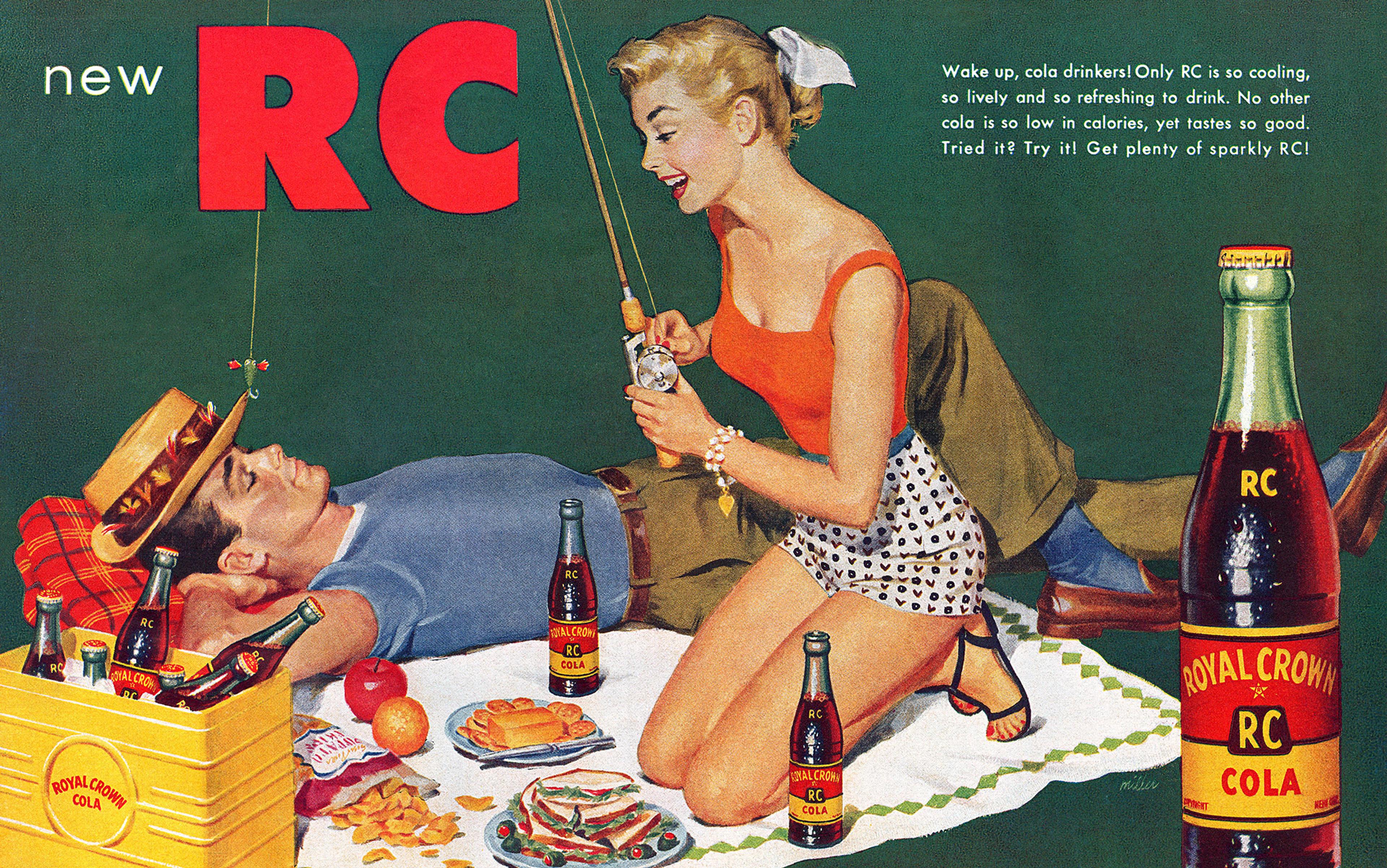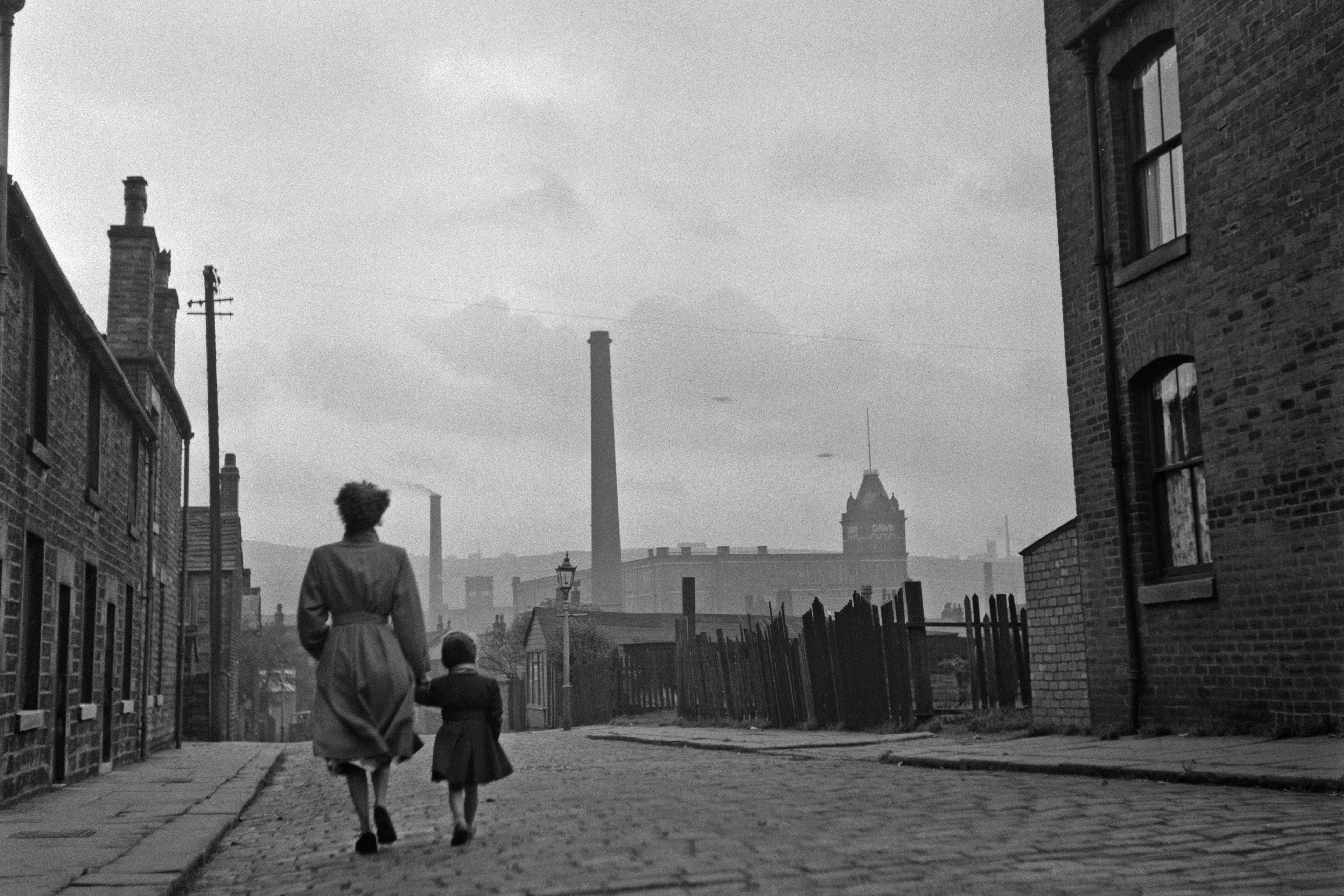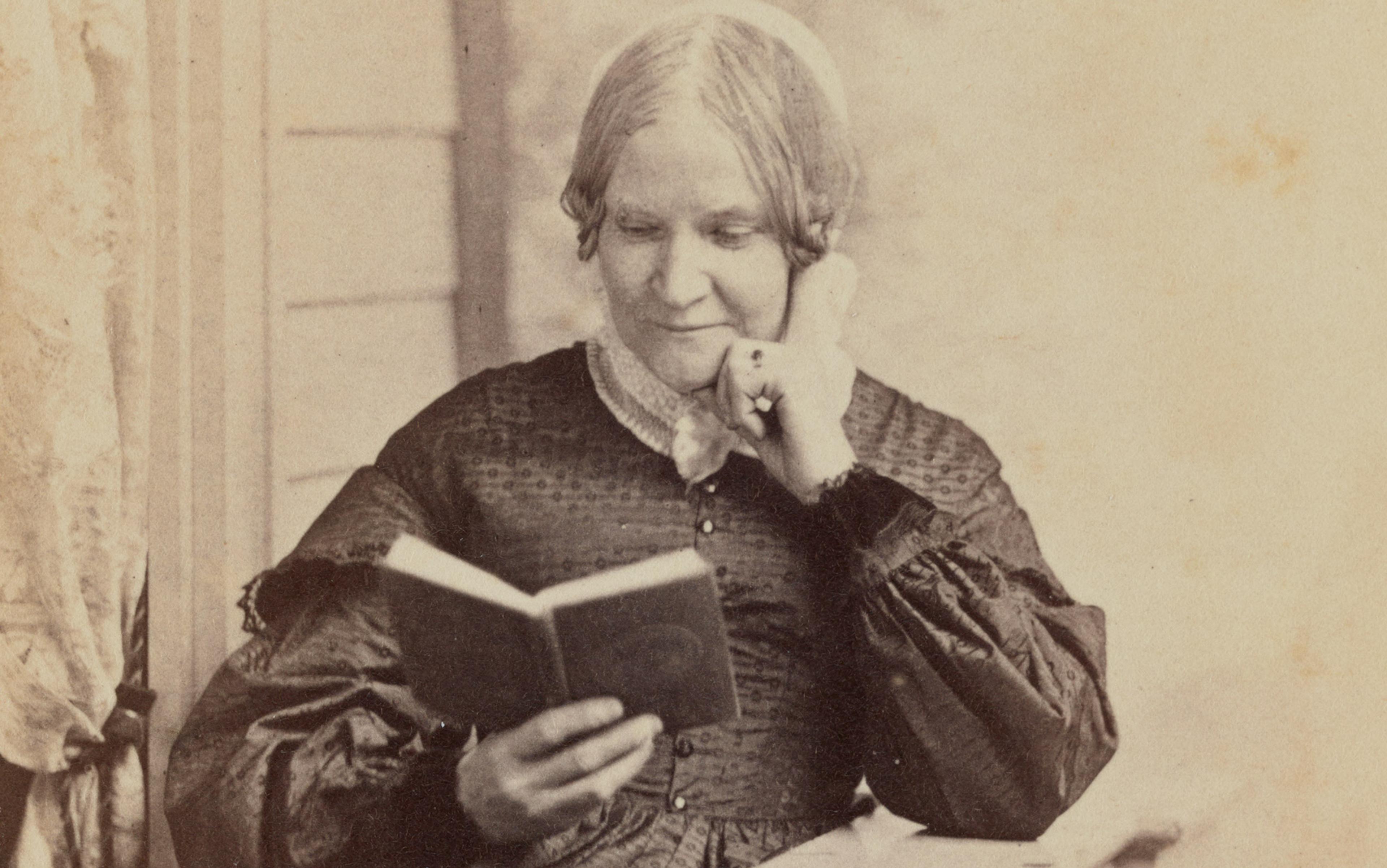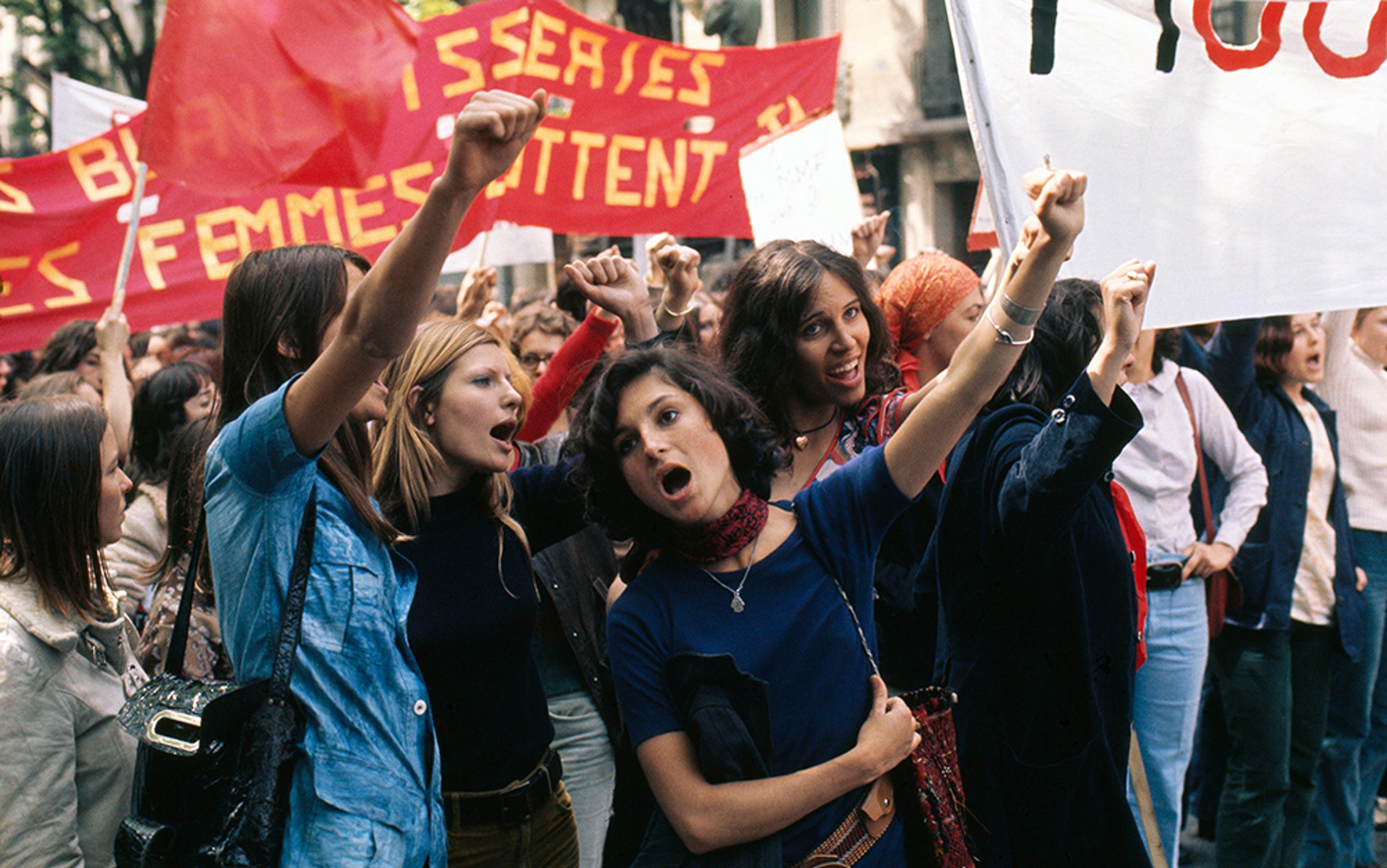Harriet Beecher Stowe is best-known as the author of the antislavery novel Uncle Tom’s Cabin (1852), a book that James Baldwin later christened the ‘cornerstone of American social protest fiction’. It might also be considered the nec plus ultra of American sentimental fiction – and for that reason a ‘very bad novel’, according to Baldwin. Stowe hoped her treacly tale would open the nation’s eyes to the evils of slavery by melting the hearts of its white readers.
Beecher Stowe is less well-known as the author of a popular Victorian homemaker’s manual coauthored with her sister Catharine Beecher, The American Woman’s Home, or, Principles of Domestic Science; Being a Guide to the Formation and Maintenance of Economical, Healthful, and Christian Homes (1869). In it, she counsels housewives on how to fulfil their function as ‘angels in the house’, the moral voice of the middle-class white American family. That Stowe should prove a standout in two such different genres might appear odd to 21st-century eyes. But to the 19th-century reader, the bridge between the two genres would have been obvious: it was the power that Americans then accorded to white women’s feelings as markers of virtue and agents of salvation, both within the private family circle and in the larger sphere of ‘community housekeeping’. White women’s status as beacons of maternal sentiment aligned, briefly, with public action and liberal social reform.
It was not to last. Over the course of the 20th century, the nation’s evolving economic system worked to strip white women’s feelings of their potentially transformative political force, redirecting them, instead, into private displays of sympathy. We recognise it today as white virtue signalling. Tre Johnson in The Washington Post recently called it America’s ‘racial ouroboros’: ‘a time loop where my white friends and acquaintances perform the same pieties over and over again’, joining book clubs, ‘owning’ their white privilege on social media, ‘checking in on’ Black friends, and then going back to business as usual. The purely performative nature of much white sentimental allyship – and in particular, the systematic redirection of ‘well-meaning’ white women’s feelings away from the public sphere – has a long history. We would do well to revisit it today.
Many Americans were appalled by the ethos of unregulated capitalism that the Industrial Revolution unleashed in the 1840s and ’50s. The brutal market logic dictated that, to succeed, a man had to be willing to ride roughshod over his neighbours. The domestic sphere, where the old communal values of selflessness and Christian charity still held sway, emerged as a counterweight, and one whose virtue the Beecher sisters made it their business to extol in The American Woman’s Home. Unlike men, who ‘toil for wealth, honour and power … mainly for earthly, selfish advantages’, the Beechers lectured, a woman was the ‘chief minister’ of the Christian home who taught ‘all under her care to lay up treasures, not on earth, but in heaven’. The middle-class married couple thus formed a moral tag team: if the husband had no choice but to earn his bread in the morally bankrupt marketplace, he at least found solace in knowing that his wife back at home was holding a torch for lost virtue.
This cultural sleight of hand whereby Americans made peace with the structural violence of the marketplace was a devil’s bargain from the beginning, as Ann Douglas expertly analysed in The Feminization of American Culture (1977). ‘Sentimentalism provides a way to protest a power to which one has already in part capitulated,’ she observed of the 19th-century cult of sentiment. And if it is to the credit of 19th-century Americans that they acknowledged what they forfeited by embracing the new capitalist world order, ‘the fact remains that their regret was calculated not to interfere with their actions.’ Women’s feelings provided an alibi for the misdeeds of market society.
Still, some women pushed to make a stand against capital in real rather than symbolic terms. The Victorian woman’s status as angel in the house and caretaker of all God’s children gave her tacit permission to do public or ‘community housekeeping’ on behalf of the socially marginalised: immigrants, the poor, Black people. Following in the footsteps of Stowe’s abolition activism, 19th-century women activists were among the first in the country to call attention to the ills of urban industrialised society as structural rather than individual in nature, a product of bad institutions rather than bad souls.
Women should do ‘community housekeeping’ not by taking to the streets but by being prudent shoppers
Recounting her experiences at Hull House in 1890s Chicago, Jane Addams lamented the ‘piteous dependence of the poor upon the good will’ of wealthy private citizens in the days before municipal and state governments stepped up to alleviate poverty in the cities. She recalled the case of one immigrant cleaning woman whose daughters had become unwed mothers struggling to secure financial support from absentee fathers. ‘She did not need charity, for she had an immense capacity for hard work,’ Addams clarified in her memoir in 1912. What she needed, instead, was ‘the service of the State attorney’s office, enforcing the laws designed for the protection of such girls as her daughters’. Faith in private charity and the invisible hand of the market, Addams and other women social reformers intimated, was not a viable solution to the inequities wrought by white capital.
Backlash against women reformers such as Addams was almost immediate. Misogyny and racism joined forces not only to denigrate activist women as denatured and ‘unfeminine’ for having abandoned the private sphere, but to deny that the populations they aimed to help – the poor, immigrants, people of colour – were worthy of being brought within the nation’s family fold in the first place. This hysterical gendering and racing of economics, focused in particular on the state/private divide, peaked in the wake of the Russian Revolution of 1917 and the Bolshevik rise to power, which touched off a Red Scare panic in the United States. The national press reported throngs of newly emancipated Bolshevik women flooding the schoolroom, the law court and the government in a thoroughly unnatural, mannish power grab. The Reds were never simply revolutionaries, but ‘orientals’ bent on domination and willing to support their comrades – immigrant workers and Black people – in labour uprisings on this side of the Atlantic. Such gender and race anarchy was proof positive, for many Americans, of what would happen if the traditional patriarchal authority of the private home yielded to a ‘domesticated’ nanny state.
But one didn’t need to be a rabid Red-baiter or a nativist mud-slinger in the first decades of the 20th century to resist structural change to a system that was clearly underserving huge swathes of the population. From the first, women’s free-floating reformist, caretaking energy was seen as a threat to even the ‘liberal’ corporate capitalist order, and as such something to be defended against. Ad agencies, their corporate clients and a nascent national communications network joined forces to convince women that they should fulfil their ‘community housekeeping’ duties not by taking to the streets, but simply by being prudent shoppers. The most savvy advertisers and their corporate clients lobbied to convince housewives that the real way to help create a better, more inclusive world for everyone was by being a good-faith participant in the unique ‘American business system,’ that is, free-market capitalism. Left to its own devices, the invisible hand of the market would magically even out the blessings of modern abundance and dissolve race prejudice into the bargain. This was a politically palatable way for white women to defend the status quo while still appearing to fulfil their feminine destiny as caretakers of all God’s children, and Madison Avenue was there to sell it.
An early advocate of freemarket boosterism as the housewife’s best bid to bring about a more perfect society was Christine Frederick, author of The New Housekeeping: Efficiency Studies in Home Management (1913), which was first serialised in 1912 in The Ladies’ Home Journal. Housewives were ‘the great purchasing factor in modern life’, she wrote, and their most important duty was to educate themselves on their ‘proper relation … to the business world which makes and sells’, to understand the complex mechanics of getting an article from the factory to the purchaser in the most efficient and cost-effective way. Only by putting her weight behind such long-term cost-benefit practices as advertising, the one-price system and competitive branding would the housewife be fulfilling her true domestic duty. Frederick patiently explained how the use of brands ultimately resulted in lower costs and greater, more reliable distribution. Frederick likened the act of giving in to cut-rate and inferior substitutes for the brand-name article to a train jumping the track: ‘[I]t … cripples the whole distribution system,’ she warned, and ‘driv[es] the family and the nation into a wrong economic balance which makes panics, unhappiness, and lack of character and worth.’
Frederick’s rose-coloured trickle-down economics took a hit in the wake of the Depression and Franklin D Roosevelt’s federally funded New Deal. But by the Second World War, economic engines were back up and running in the US, making the time right for a resurgence of the freemarket domestic femininity pushed by Frederick. She found a very able successor in Jean Wade Rindlaub, a midcentury Madison Avenue power broker who made her career selling dreams of domestic bliss to American women. Rindlaub’s work for the gold-star Madison Avenue firm of Batten Barton Durstine and Osborn (BBDO), on ad campaigns for everything from Community Plate silverware to Betty Crocker cake mixes to Chiquita bananas, helped to build the enduring archetype of the postwar happy homemaker, a how-to kit for aspiring June Cleavers.
Like her predecessor, Rindlaub defended advertising as a vital ‘public service’ and ‘a closely knit part of our entire economic system’. Advertisers, she asserted, helped to streamline distribution and reduce consumer costs, spreading wealth equally across all races and classes. Indeed, in a memo dictated in 1948, she vented her frustration at the current fad for advertisements that hooked themselves to specific social causes (what we would today call corporate virtue signalling). ‘Advertising has always been a social force,’ Rindlaub insisted, simply by serving the smooth functioning of a freemarket economy. ‘The social consequences of mill shutdowns, layoffs, pay cuts and other grim results of failure to market the things a manufacturer makes are very real,’ she warned. Those who turned up their noses at ‘the profit system’, as they called the freemarket ideology, had nothing better to offer – and had thus better keep quiet. ‘Up to now nothing else has ever come along that has done so much in the way of material things for the comfort and happiness of its people,’ was her standard reply.
Whenever activist women sought systemic, public reforms under the banner of advancing ‘maternal’ values, or actively withheld their purchasing power to hold capital to account, white corporate capital stood at the ready with a more ladylike alternative: similar civilising results could be achieved, they argued, through trickle-down redistribution, leaving intact the freemarket model.
If Frederick played mainly on the brusque, no-nonsense language of economic efficiency to convince housewives to exercise virtue through private spending, Rindlaub discovered that what she called ‘heart-tug’ advertising was unmatched in its ability to co-opt white women’s free-floating maternal sentiment and channel it into private purchasing decisions. Women were sentimental creatures, she insisted. Her in-house polls (all of white women) taught her that, and she passed on the tip to her corporate clients. ‘Not a job worry in a carload. Not a political worry. My man. My home. My mother. My children – these are the things on your customer’s mind,’ Rindlaub lectured a panel of Oneida silverware execs in 1946. ‘When you get outside the sharp focus of a woman’s own interest, of all the people near and dear to her,’ she cautioned, ‘you lose her attention.’
If women felt ‘troubled’ by the world outside their front doors, relief was just a cake away
And yet Rindlaub knew, also from her extensive white-person polling, that the average American housewife’s ‘sharp focus’ on her intimate family fold didn’t prevent her from feeling, at times, that she lacked purpose. ‘Women want to find some way to be a little bit of use in the world,’ she told a panel of all-male United Fruit executives in 1956. She sensed in housewives at midcentury a vague questing, ‘emotion waiting to catch on to something’. In a series of advertisements that she designed for Betty Crocker cake mixes beginning in 1953, Rindlaub offered women a ray of hope: baking a cake as one small step a housewife could take to make the world a better place.
Rindlaub’s Betty Crocker ads hammered home this message of sentimental domesticity, promising that if women felt ‘troubled’ by the world outside their front doors, relief was just a cake away. In brainstorming possible copy lines for Betty Crocker ads, she invented the character of a distressed housewife, wondering how she might make herself useful in a crazy, mixed-up world. ‘I can’t make the world over,’ one wistful mother testified. ‘So I keep the cookie jar full. And the house full of children. With crumbs left over for the birds.’ ‘I can’t change the headlines, but I’ve got to do something,’ sighed another woman. ‘So I’ve gone back to baking bread.’ A woman could do worse, Betty Crocker suggested, squaring her shoulders in the face of chaos. Baking was ‘one small way to start re-making the whole wide world’.
In the midst of Madison Avenue’s bid to divert women’s maternal instincts into bread-baking, the old reformist, public-facing model of women-driven community housekeeping hadn’t entirely disappeared. Indeed, in one of the monthly columns that the journalist Dorothy Thompson regularly contributed to the Ladies’ Home Journal during the Second World War, she issued a rallying call to women to ensure that ‘every American child has a decent home’ by war’s end. Substandard living conditions made the US the highest-ranked among developed nations in juvenile crime rates, she noted, a shameful state of affairs that only a national plan for government-subsidised housing would ameliorate.
Thompson anticipated her critics: ‘collectivism’, ‘government competition’, ‘social interference’ they would cry. ‘There are still people who prefer expensive reform schools and prisons to “uneconomic” homes for the underprivileged American child,’ she acknowledged. But ‘not only their hearts but their economics are bad.’ Dollar for dollar, investment in equality of access to decent housing would, in the end, ‘make us all richer’. She focused, in particular, on the plight of Black people in Chicago and the insurmountable obstacles they faced in seeking decent housing. A society systematically ‘rigged against’ its Black population, as was the case in the US, would never achieve justice without government action, she assured readers.
But in postwar America, appeals to political mobilisation of the Thompson variety fell increasingly out of step with the times. In place of helping to build a foundational ‘home’ for those left out of the blessings of an expanding economy, postwar households would busy themselves, instead, with the pursuit of private domestic comforts. Rindlaub’s heart-tug appeals, and their promise that privately expressed maternal love would make bearable a crazy, mixed-up world of masculine striving and struggle, won the day. In a talk to prospective clients in 1954, Rindlaub pressed this idea home. ‘You could think of a cake – or a pie – or a tray of R C colas – as a contribution to family living – a shared social experience for the family,’ she urged. ‘And there are people who would tell you that it is good experiences shared that deepen and enrich the family’s living, and that deeper family living is the beginning of better community living, and better community living might be the answer to such social problems as juvenile delinquency.’
In the 1940s, editorials in the Ladies’ Home Journal routinely called on housewives to lobby for government-subsidised housing, affordable prenatal and preschool health clinics for children, and free school lunches as viable paths to reducing juvenile delinquency. But by the 1950s, a woman’s commitment to reform could be satisfied, apparently, through the private act of purchasing and cracking open an R C Cola.
The heyday of BBDO’s ‘emotional copy’ cake ads – those urging women to focus on the family circle, to bake away disturbing headlines, to cure juvenile delinquency with cakes – coincided with newspaper headlines reporting the Supreme Court’s decision on Brown v Board of Education (1954); the murder of Emmett Till (1955); and the Arkansas National Guard barring the entrance to Central High against the Little Rock Nine (1957). But this was a cognitive dissonance that Madison Avenue and its white audience was all too prone to dismiss, if they even noticed it at all. Rindlaub taught women how to think of consumption as an act of love. She tutored them in the sentimental language of capitalism and offered them a script that helped them square feminine virtue with the cold, pitiless logic of the market and the white power structures it buttressed. When housewives felt the world outside their doors was too big and out of control, she gave them a soothing, private language of deferred hope that was vastly more attractive than the hard language of reality.
The power of soda as a symbol for world peace and racial unity is so irresistible an idea on Madison Avenue that 70 years after Rindlaub’s plug for R C Cola as a ‘contribution to better community living’, and nearly 50 years after Coke claimed it would ‘teach the world to sing/in perfect harmony’, Pepsi felt it might as well give it a try: in 2017 the socialite Kendall Jenner brought rioters and police together by handing a handsome officer a cold one. And if this most recent attempt to dress up capitalism as the prince of peace was a public relations disaster, that doesn’t change the grim facts on the ground. Over the same span of 70 years, the ratio of Black to white prison inmates has jumped from 5:1 to 6:1; the ratio of Black family to white family wealth has stalled at an appalling $5.04 to $100. New York City schools, with an enrolment topping 1.1 million students, are among the most segregated in the nation, both by race and by socioeconomic status.
One can draw a straight line connecting white women anticommunist and nativist activists in the 1920s to the coffee-klatch housewife conservatism of southern California’s Goldwater Gals in the 1960s and then to Sarah Palin’s ‘mama grizzlies’ and their modern-day iteration, ‘Moms for Trump’. All are invested in a white-dominated order that targets nonwhites as an existential threat. All circle the wagons around the private family home to ward off state-sponsored attempts to shift the balance of power, or to loosen in any way the politico-economic-legal stranglehold constraining people of colour. All use race-baiting. ‘This is not a man who sees America as you see it and how I see America,’ Palin routinely said of senator Barack Obama during the 2008 presidential campaign, to thunderous applause. ‘Kill him!’ responded one Florida rally attendee, saying the silent part out loud. The code words for colour within white women’s ‘maternalist’ movements have changed over 100 years, but the programme remains the same.
Such blatant racism constitutes a daily threat to Black lives. But we can’t allow it to distract us from anti-Blackness in its softer, more socially agreeable guises. Since the COVID-19 pandemic hit in mid-March, domesticity is back in the limelight. Instagram and Pinterest feeds pop with images of fresh-baked sourdough bread and apple pies; hand-crafted face masks; home-grown vegetables and herbs. The products most in demand during the first weeks of national stay-at-home orders could double as a to-do list for homesteaders: seeds, beans, flour, lumber, sewing supplies. As if on cue, Betty Crocker was resurrected in spirit if not in fact; bread-making became one way of taming ambient COVID-19 anxiety among what one acid-tongued commentator dubbed ‘the sourdough class’.
But in fact, this pandemic-induced retreat to the comforts of home merely amplified a trend that Emily Matchar documented in her book Homeward Bound: Why Women Are Embracing the New Domesticity (2013). Middle-class white women fed up with the dispiriting side of corporate capitalism – routinised boredom, Big Ag and its terrors, artificiality in all of its guises – were choosing to ‘opt out’ of the system in record numbers. From home-schooling to vegetable gardens to urban chicken coops, women retreated into the splendid isolation and safety of their homes.
Domesticity as a form of white nostalgia has been central to maintaining this time loop for 150 years
These ‘new domesticity’ pioneers were same women who were able to welcome pandemic stay-at-home orders as business as usual, rather than a threat to the biological and economic survival of their families. For amid the sepia-toned images of earth-covered carrots and steaming cinnamon buns, another reality was slowly revealing itself. The decidedly less Instagram-worthy domestic scut work that white women routinely outsource to low-income people of colour – housecleaning, childcare, elder care, lawn maintenance, low-paid meal prep – was suddenly laid bare in breathtaking unemployment figures. Other low-paid ‘essential workers’ who were fortunate enough to retain employment faced an uneviable choice: risk their lives by continuing to work and being exposed to the virus, or stay at home only to risk being evicted from that home for failure to make rent. The idyll of white middle-class domesticity is paid for by the almost unfathomable precarity of low-wage work, and low-wage workers of colour in particular.
The knowledge that the United States’ ‘race problem’ is not just personal but also structural is nothing new. Black people have always known it, and some white people – from Jane Addams onward – have been lucid enough to know it, too. But it is a truth that white Americans can’t seem to remember, or don’t want to remember, and this peculiar American aphasia – this warp-time of wilful unknowing, of performing ‘the same pieties over and over again’ – is also its peculiar tragedy. Domesticity as a form of white nostalgia, a retreat into the timeless safety of home and hearth, has been central to maintaining this time loop for well over 150 years now.
Poverty, and lack of access to capital, and the school-to-prison pipeline will kill you just as surely as a knee on the neck will kill you – but more slowly, and thus in a manner much less likely to galvanise headlines, sympathy and meaningful political action. So well-meaning white women fret and check in on their Black friends. They attend a march. They join book clubs. They bake sourdough bread, and compost, and churn butter to reclaim their domestic space from the moral taint of our neoliberal consumerist nightmare. They tell themselves that it is enough.
But it is not enough, and never has been. Sentimental hand-wringing ‘always borders on dishonesty’, Douglas observed of Victorian women’s attempts to register ‘angelic’ resistance to a brutal economic and political order. ‘But it is a dishonesty for which there is no known substitute in a capitalist country.’ We have been over this ground already. Today’s ‘new domesticity’ opt-outers are not mama grizzlies, to be sure. But nor are they true allies to those who cannot afford to opt out.
‘True integration, true equality, requires a surrendering of advantage,’ wrote Nikole Hannah-Jones in The New York Times Magazine in 2016 of the plight of New York City’s massively segregated school system. ‘When it comes to our own children, that can feel almost unnatural.’ But unless we stop talking about simply acknowledging advantage, and start talking about ‘surrendering advantage’, structural racism will never go away. Until we acknowledge that, within a system rigged on behalf of white capital, liberal white women’s centuries-old habit of sentimental virtue signalling is just not going to get the job done – well, the job will remain undone.






